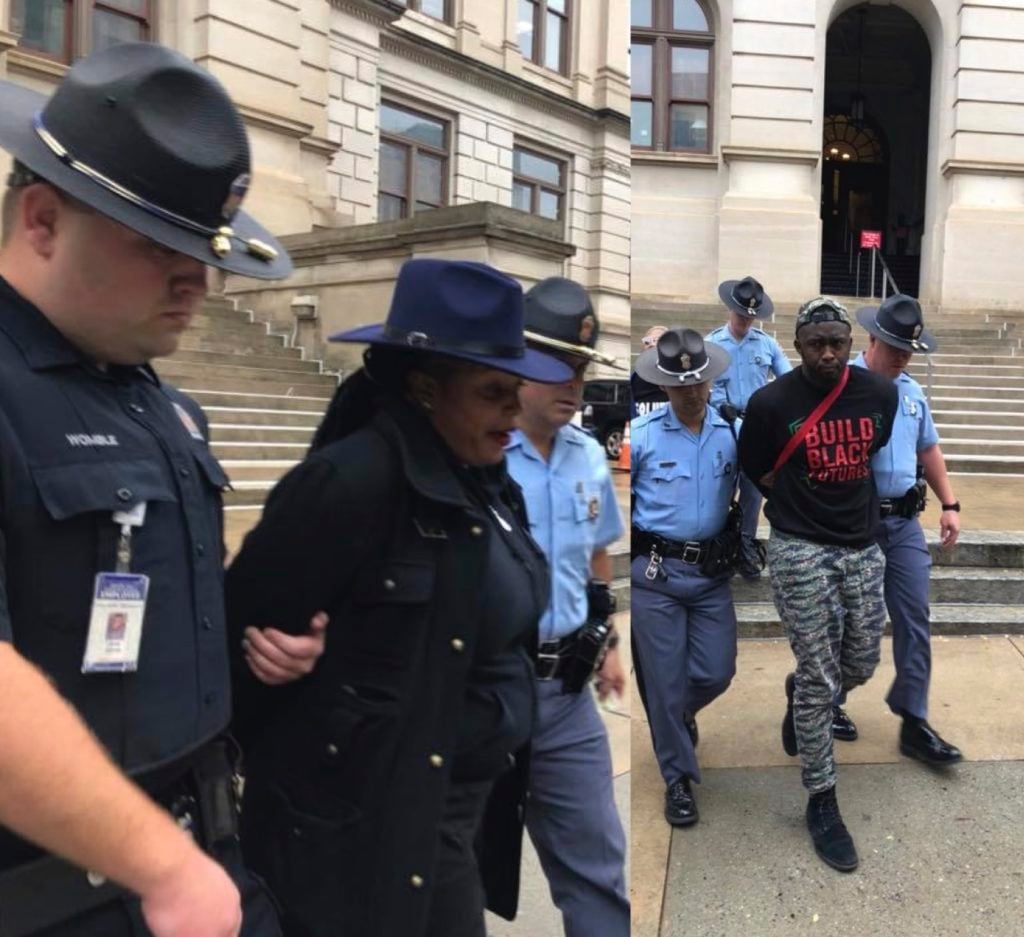Each day we get some reminder of the pervasiveness and persistence of white supremacy in this country, and each day our movements grapple with how best to understand and contend with it – whether it manifests as the police murder of another unarmed Black person or a new assault on voting rights or disproportionate deaths from COVID. Organizing Upgrade wanted to deepen the discussion of how our strategies can address the racist structures of the U.S. state. To kick off the conversation, we published Bob Wing’s article “The White Republic and the Struggle for Racial Justice” earlier this year, and then carried six responses. “Recognizing that the U.S. is a racist white republic helps ground our understanding that the racist state plays a central role in shaping and enforcing racial capitalism and systemic racism,” Wing contends. His article details the history behind this observation and its implications for our movements’ work going forward, especially the need to replace the racist state with an antiracist state.

Bob Wing, “The White Republic and the Struggle for Racial Justice.”
VIDEO DISCUSSION: Bob Wing talks to Frontline Dispatches host Gerald Lenoir about “The White Republic,” laying out the main points of his argument. “I’ve been writing about race and racism for most of my life,” Wing says. “In spite of the rise of the white supremacist far right and the MAGA folk in 2016…a whole lot of people weren’t centering race in the way it should be. I wanted to go deeper, and especially in regards to the state. There’s just generally on the Left and in the country as a whole this idea that the American Revolution ushered in a democracy. It had its flaws, but it was still basically a democracy and a framework you could struggle for justice in. But from the very beginning the American Revolution was against the interests especially of Black and Native American peoples. . . .That is the deep background for why the struggle against racism is so central.”

The authors who responded to Bob Wing’s article elaborated, ruminated on and debated his conclusions; we encourage readers to add your voices to this conversation.
“Build the Politics of a New Majority,” by Bill Fletcher, Jr. “What I would add to what Bob has argued is that the fightback must necessitate the building of the politics of a ‘new majority,’ Fletcher writes. “The ‘new majority’ must be constituted in such a way that it is not seen as a demographic bloc, but a bloc of popular forces and social movements that represents the oppressed. In this context, the battle for democracy, and specifically, the battle for consistent democracy and against racist and national oppression becomes key in determining the outcome of the turbulence of the current era.”
“Against Left-Wing White Nationalism,” by Gerald Horne. A longtime advocate of the concept of the white republic, Horne writes, “The attempt to build ‘class unity’ without confronting these underlying tensions often has meant coercing oppressed nationalities—Blacks in the first place—to co-sign a kind of ‘left wing white nationalism.’” He begins his analysis with “the confluence of settler colonialism and the construction of whiteness,” and moves forward through history.

“White People’s Stake in Ending the White Republic,” by Erin Heaney. Defeating the white republic “will necessarily require large numbers of white people to defect from white solidarity and instead choose multiracial solidarity,” writes Heaney, who is the national director of Showing Up for Racial Justice (SURJ.) Though poor white people will benefit most from transformative change, “organizing poor white people into multiracial formations at scale without falling prey to the class reductionism that ignores race is enormously complex – something no one on the left has cracked yet,” she says.
“Labor Must ‘Block and Build’ to Defend Democracy,” by Peter Olney & Rand Wilson. “Our challenge in trying to bring the labor movement into that front [to defeat white supremacy] is to operationalize a perspective that builds antiracist practice, tackles white supremacy and fights capitalism – and to do that among a membership that is not rooted in a shared identity or philosophy,” Olney and Wilson write. From their long experience as union organizers, they draw the lesson “that unity and awareness of our shared enemy is built among trade unionists and allies in the trenches of common struggle.”

“Unpacking the Republic and Learning from Victories,” by Van Gosse. Drawing on his work as a historian, Gosse challenges the monolithic picture of the white republic that Wing presents. “[The white republic] has been challenged repeatedly, and sometimes victories have been won. What can we learn from that history?” The persistence of Black political power after Reconstruction and the shifts in political power after the Great Migration bear particular scrutiny, Gosse suggests.
“Look to Class Struggle to Beat the White Republic,” by Barry Eidlin. In perhaps the sharpest strategic debate with Wing, Eidlin argues that organizing against the white republic must be anchored to an understanding of the material basis of white supremacy, and powered by interracial working-class solidarity – rather than a cross-class alliance. Examining the labor upsurges of the 1930s he observes, “Rather than an exception, the 1930s present us with a missed opportunity. It was a moment when an interracial working-class alliance was a real possibility. Class emerged as the ‘main animator’ in the fight for social justice precisely because the working-class upsurge of the period challenged the white power structure and reoriented white workers away from the racist ruling-class alliance, while linking principled anti-racism to a broad program for economic justice.”

The series wrapped up with some concluding thoughts by Bob Wing. Responding sharply to Eidlin’s arguments that “racial oppression and white privilege are merely ideological, not systemic, structural, or material,” and “the antiracist struggle should be realigned along class lines,” Wing re-emphasizes and elaborates his call for a cross-class alliance. “I purposely used the term ‘united front’ to refer to multi-class forces united to defeat racist authoritarianism and fight for an antiracist democracy,” Wing writes. “And I believe it compels us to adopt another strategic concept that recognizes the breadth of the anti-Trumpist alliance, including capitalists: the democratic front.” Readers continue the lively discussion in the “Comments” under this piece.


